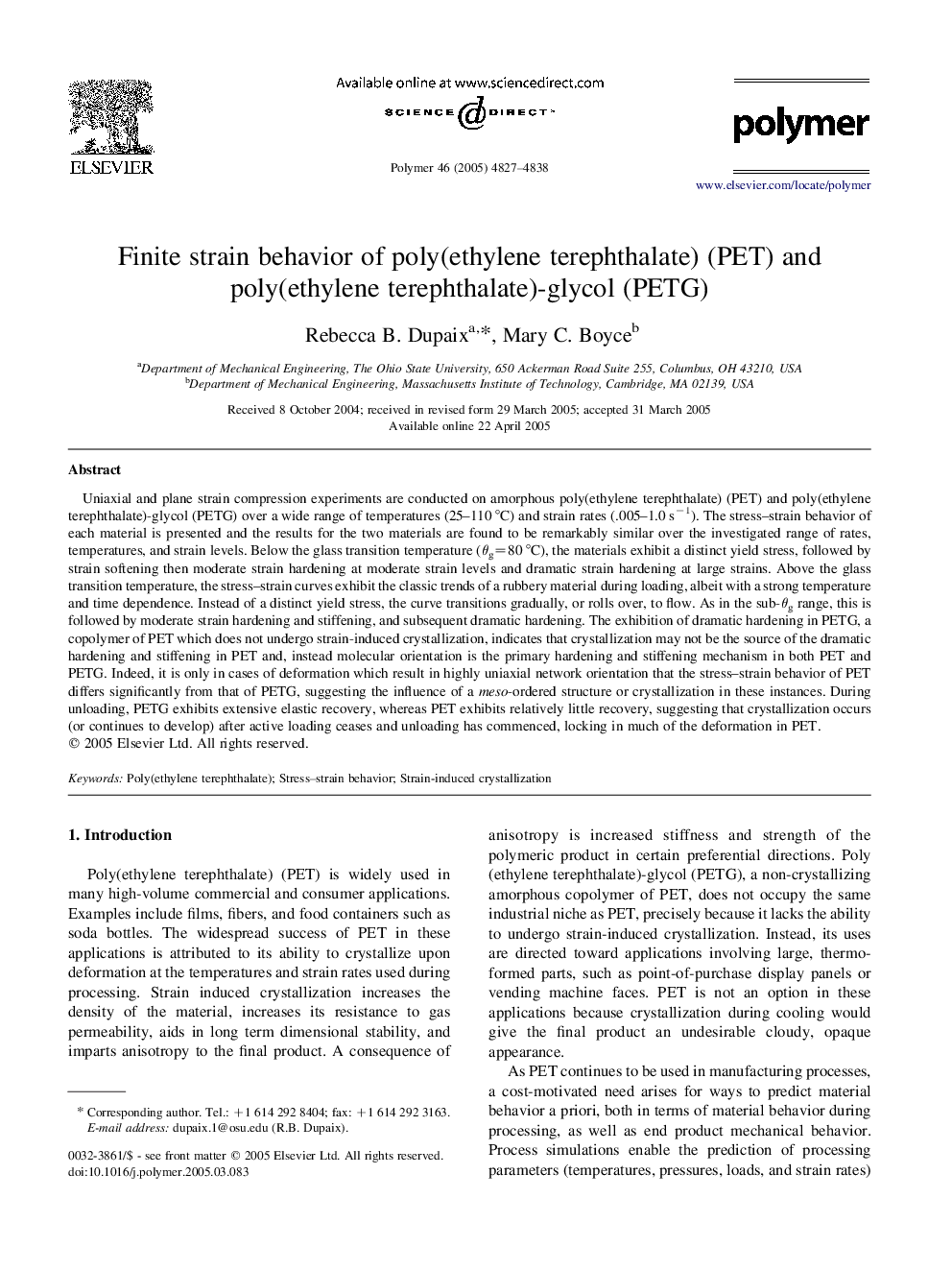| کد مقاله | کد نشریه | سال انتشار | مقاله انگلیسی | نسخه تمام متن |
|---|---|---|---|---|
| 5191647 | 1381236 | 2005 | 12 صفحه PDF | دانلود رایگان |

Uniaxial and plane strain compression experiments are conducted on amorphous poly(ethylene terephthalate) (PET) and poly(ethylene terephthalate)-glycol (PETG) over a wide range of temperatures (25-110 °C) and strain rates (.005-1.0 sâ1). The stress-strain behavior of each material is presented and the results for the two materials are found to be remarkably similar over the investigated range of rates, temperatures, and strain levels. Below the glass transition temperature (θg=80 °C), the materials exhibit a distinct yield stress, followed by strain softening then moderate strain hardening at moderate strain levels and dramatic strain hardening at large strains. Above the glass transition temperature, the stress-strain curves exhibit the classic trends of a rubbery material during loading, albeit with a strong temperature and time dependence. Instead of a distinct yield stress, the curve transitions gradually, or rolls over, to flow. As in the sub-θg range, this is followed by moderate strain hardening and stiffening, and subsequent dramatic hardening. The exhibition of dramatic hardening in PETG, a copolymer of PET which does not undergo strain-induced crystallization, indicates that crystallization may not be the source of the dramatic hardening and stiffening in PET and, instead molecular orientation is the primary hardening and stiffening mechanism in both PET and PETG. Indeed, it is only in cases of deformation which result in highly uniaxial network orientation that the stress-strain behavior of PET differs significantly from that of PETG, suggesting the influence of a meso-ordered structure or crystallization in these instances. During unloading, PETG exhibits extensive elastic recovery, whereas PET exhibits relatively little recovery, suggesting that crystallization occurs (or continues to develop) after active loading ceases and unloading has commenced, locking in much of the deformation in PET.
Journal: Polymer - Volume 46, Issue 13, 17 June 2005, Pages 4827-4838